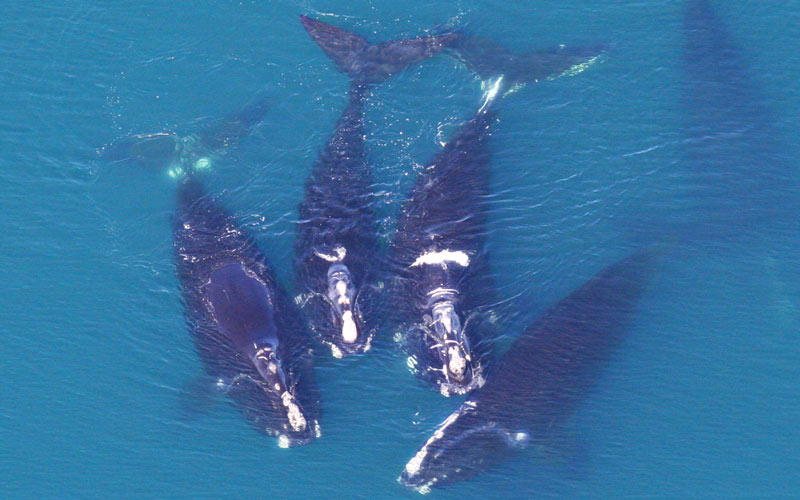
Photo: Brian Skerry/Steve De Neef
November 17, 2021 (BOSTON, MA) — The First Circuit Court of Appeals on Tuesday reinstated a seasonal prohibition on lobster fishing with buoy lines in an area roughly 30 nautical miles off the coast of Maine after an emergency motion was filed by environmental groups. The National Marine Fisheries Service implemented the prohibition to protect critically endangered North Atlantic right whales from deadly entanglements in lobster gear.
“We’re thrilled right whales will get at least some relief from deadly lobster gear,” said Kristen Monsell, oceans legal director at the Center for Biological Diversity. “The court recognized that entanglements pose an existential threat to right whales and that federal officials followed the science in implementing this important conservation measure. But the agency needs to do more to protect this incredibly vulnerable species from extinction.”
The measure, which is part of a new Fisheries Service rule, restricts fishing in the 967-square mile area in the Gulf of Maine from October through January, when the whales are at increased risk of entanglement in dense, heavy lobster gear in the area. The First Circuit’s decision recognized that the restricted area protects the whales from “swimming among an aggregation of life-threatening lines” in the area.
“Reducing entanglements by prohibiting fishing in this area is critical to ensuring the survival of right whales,” said Erica Fuller, a senior attorney at Conservation Law Foundation. “This decision affirms that science matters. The First Circuit got it right: entanglements often can’t be traced, so where whales, lots of lines, and heavy fishing lines coincide, we need fishing restrictions now.”
A group of Maine fishermen challenged the prohibition and filed a motion to preliminarily stop the restricted area from taking effect. A federal judge in the District of Maine granted the fishermen’s motion on October 16. Today’s order means the closure will now go into effect as intended while the preliminary injunction appeal is heard by the appellate court.
The First Circuit wrote that the lower court “misapprehended the record and over-stepped its role in rejecting the judgment of the agency that Congress has charged with protecting endangered marine mammals.” It further noted that “while there are serious stakes on both sides, Congress has placed its thumb on the scale for the whales.”
“This decision comes not a moment too soon for the right whale,” said Jane Davenport, a senior attorney at Defenders of Wildlife. “Today’s decision restores the first protective measure NMFS has implemented for the right whale since the unprecedented, unusual mortality event began more than four years ago.”
The Center for Biological Diversity, Conservation Law Foundation and Defenders of Wildlife intervened in the case to defend the restricted area. The groups appealed the district court’s decision to the First Circuit and filed an emergency motion to stay the effectiveness of the district court’s decision pending appeal.
The groups have separately challenged the Fisheries Service’s final entanglement rule in federal court in the District of Columbia on different grounds, arguing that the agency violated key wildlife statutes to the species’ detriment. .
Today’s ruling comes three weeks after scientists announced that the right whale population had dropped to only 336 individuals in 2020 — an 8% decline from 2019 and the lowest population number for the species in nearly 20 years. The restricted area in the Gulf of Maine is the only new measure currently in place to protect right whales.
Experts are available for further comment.
###

